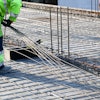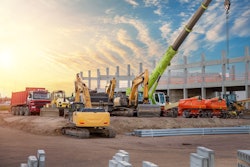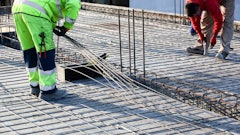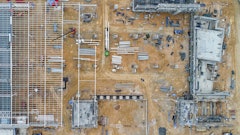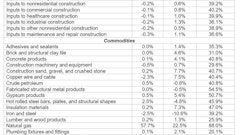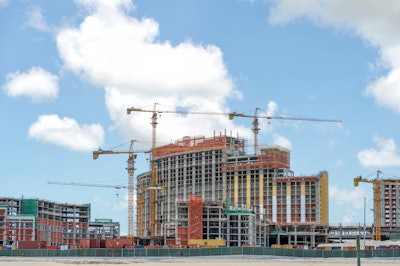
Every day, construction companies across the United States lose nearly $767 million due to payment delays and inefficiencies. This staggering drain on the industry totaled $280 billion in 2024 alone — enough to build 14 Empire State Buildings. For an industry already grappling with thin margins and rising costs, these payment delays aren't just numbers on a spreadsheet — they're a crisis threatening the financial health of countless contractors and subcontractors.
The problem is only getting worse. Today, it takes an average of 90 days for construction companies to receive payment on their invoices — double the 45-day threshold that financial experts consider healthy for maintaining strong cash flow. This gap between work completed and payment received is pushing many companies to the breaking point and is a key reason construction companies fail when the market tightens.
Consider a typical mid-sized contractor managing multiple projects. They've completed $2 million worth of work this month, but they're still waiting on payments from jobs completed last quarter. Meanwhile, they need to pay their subcontractors, purchase materials for upcoming projects, and meet payroll. This cash flow squeeze forces many to take on expensive short-term loans or delay their own payments, creating a damaging ripple effect throughout the industry.
The Real Cost of Payment Delays
The ripple effects of payment delays touch every aspect of construction operations. Beyond the immediate financial strain of covering payroll and materials, companies face cascading consequences that affect their entire business ecosystem.
Late payments force companies to take on expensive bridge loans, miss early payment discounts, and strain relationships with suppliers and subcontractors. This financial pressure limits their ability to bid on new projects, invest in equipment, or hire skilled workers. The true cost isn't just measured in dollars and cents but in missed opportunities for growth and innovation that could strengthen the entire industry.
Why Traditional Payment Systems Fall Short
Construction payments are uniquely complex. A single project often involves multiple stakeholders —from general contractors and subcontractors to suppliers and clients— all needing to coordinate payments.
This complexity is compounded by several bottlenecks and roadblocks. The challenges include contract changes and adjustments that happen mid-project, as well as multiple approval layers required for each payment. Projects are further complicated by retention, holdback requirements, and complex compliance and documentation needs. High-stakes chargebacks and dispute risks pose additional challenges, while seasonal variations in work and payment flows create unpredictable patterns. The situation is intensified by strict insurance and bonding requirements and the need to maintain local and state regulatory compliance.
Most payment systems weren't built for this complexity. They're too rigid to handle last-minute changes and too basic to process the volume of project data. Many construction companies still rely on outdated systems that require extensive manual input, leading to delays, errors, and frustrated project managers.
Take the example of change orders, which is a common occurrence in construction projects. Traditional payment systems often can't handle the dynamic nature of these adjustments, forcing companies to maintain separate tracking systems and manually reconcile changes. This not only increases administrative overhead but also introduces opportunities for errors and disputes.
The Technology Solution
Modern financial technology offers a way forward. New solutions are specifically designed to handle construction's unique challenges for safer, faster, and more efficient payment handling.
Cloud-Based Systems: These platforms offer real-time access to payment data and can scale with your business. When combined with AI and machine learning, they can automate payment workflows and reduce administrative burdens, whether that’s by processing hundreds of invoices simultaneously, generating detailed audit trails for compliance, or matching deliverables to contract requirements automatically.
Cloud-based solutions enable construction companies to keep a finger on the pulse so they can flag potential issues before they cause delays while providing real-time visibility into payment status.
Embedded Payments: New low-code solutions allow construction companies to integrate modern payment systems without disrupting their current operations, seamlessly connecting with existing accounting software. They handle complex approval workflows to process payments faster and more securely than ever before while reducing chargeback risks through better documentation. Additionally, embedded payment solutions automate payment scheduling based on project milestones and provide real-time payment tracking and reporting to mitigate delays.
Blockchain Technology: Smart contracts can automatically trigger payments when project milestones are met or inspections are passed. Digital ledgers provide real-time transparency for all stakeholders, reducing payment disputes and delays.
Whatever solution a company opts for, it’s important to consider how they address their specific organizational needs, whether that’s blockchain for security and transparency, cloud systems for scalability, or embedded payments for easy integration and speed.
The Future of Construction Payments
The next wave of payment innovation is transforming how construction companies handle financial transactions. Low-code platforms are emerging as powerful tools that allow companies to customize payment workflows without extensive technical expertise. These platforms work alongside AI-powered systems that can analyze payment patterns to predict and prevent delays before they occur.
The future of construction payments lies in unified ecosystems that seamlessly connect CRM, accounting, and payment processing systems. These integrated solutions are being enhanced with sophisticated security features that protect against fraud and disputes while maintaining smooth operations. Mobile-first solutions are becoming increasingly important, allowing for on-site payment management that keeps pace with the dynamic nature of construction projects.
Predictive analytics is another game-changing technology that's revolutionizing cash flow management in the construction industry. These tools can forecast payment trends and potential issues, allowing companies to make proactive decisions about their financial operations. Additionally, automated compliance and documentation systems are reducing the administrative burden while ensuring adherence to regulatory requirements.
Taking Action
The $280 billion drain on the construction industry doesn't have to continue. By embracing modern payment solutions, construction companies can slash payment processing time from 90 days to under 30 and reduce administrative costs by up to 75%.
Across the board, technology is empowering construction companies to build a stronger and more resilient business model. Through this, companies can improve cash flow management and forecasting, allowing them to focus on building rather than chasing payments and increase their competitiveness in bidding situations. These solutions are helping strengthen relationships between construction companies, subcontractors, and suppliers by removing the bottlenecks and difficulties that cause so much stress when it comes to handling payments.
The technology exists today to solve construction's payment crisis. Forward-thinking companies are already gaining advantages through modernized payment systems. The question isn't whether to modernize anymore — it's how quickly you can implement these solutions before your competitors do.
The construction industry has always been built on relationships and trust. Modern payment solutions don't replace these foundations but strengthen them by removing friction and creating transparency.


